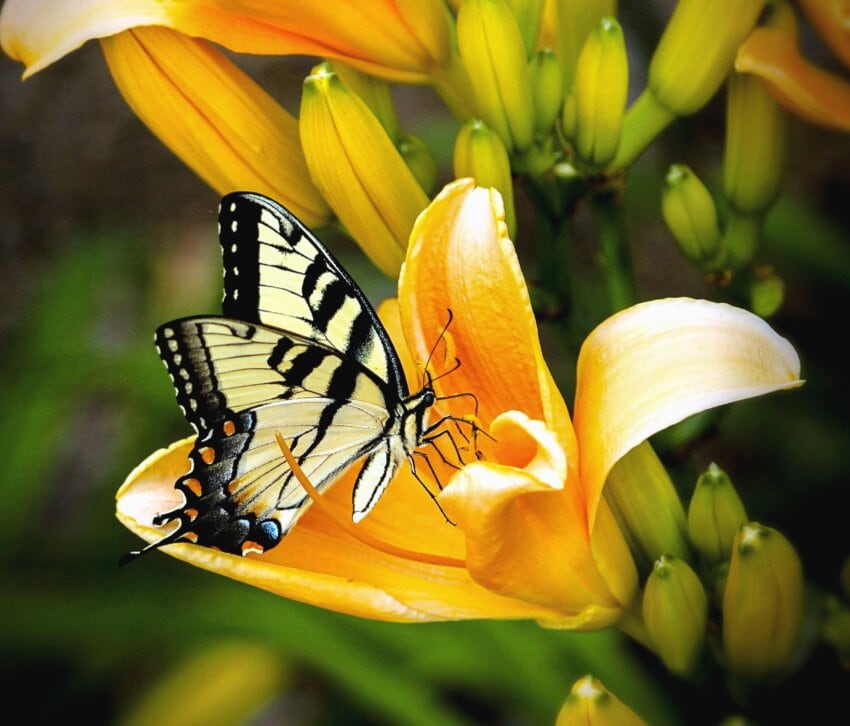Attract Pollinators, Plant a Butterfly Garden

Planting a Butterfly Garden to Attract Pollinators: A Blooming Haven for Wildlife
Butterflies: Nature's Pollinators
Butterflies, those delicate, winged jewels of the insect world, play a crucial role in our ecosystem as pollinators. They flutter from flower to flower, transferring pollen and enabling plants to reproduce. Unfortunately, these vital creatures are facing declining populations due to habitat loss and other factors. But fear not, gardeners! You can become a superhero for butterflies by creating a butterfly-friendly garden that doubles as a pollinator habitat.
Understanding Butterfly Needs
Before we dive into the nitty-gritty of garden design, let's first understand what butterflies need. Butterflies have four stages in their life cycle: egg, caterpillar (larva), chrysalis (pupa), and adult. Each stage requires specific resources. Adult butterflies need nectar-rich flowers for food, while caterpillars require host plants for nourishment. Additionally, butterflies need shelter and places to lay their eggs.
Choosing the Right Plants
Selecting the right plants is crucial for creating a thriving butterfly garden. Native plants are an excellent choice as they've evolved with local butterflies and provide the best food sources. Here are some native plants that cater to various butterfly species:
- Milkweed (Asclepias) - The sole food source for monarch caterpillars and a nectar plant for many other butterflies.
- Coneflowers (Echinacea) - Attract a wide range of butterflies, including monarchs, painted ladies, and great spangled fritillaries.
- Asters (Symphyotrichum) - Late-season bloomers that provide nectar for migrating monarchs and other butterflies.
- Butterfly Weed (Asclepias tuberosa) - A drought-tolerant, native milkweed that attracts monarchs, queens, and other butterflies.
- Purple Coneflower (Echinacea purpurea) - A popular native wildflower that attracts butterflies like the monarch, great spangled fritillary, and ruby-throated hummingbird.
Designing Your Butterfly Garden
Garden design plays a significant role in attracting butterflies. Here are some tips to create an inviting wildlife garden:
- Plant in clusters - Butterflies prefer to visit large groups of the same plant species. Plant at least three of each type to create a noticeable patch.
- Layer your plants - Plant in layers to provide shelter and create a sense of enclosure. This also helps to attract a wider variety of butterfly species.
- Include host plants - Make sure to include plants that caterpillars feed on, not just nectar sources.
- Provide water - A shallow dish of water or a small pond will attract butterflies for drinking and puddling (males gather in groups to sip minerals from muddy water).
- Avoid pesticides - Pesticides can harm or kill butterflies. Opt for organic, butterfly-friendly methods to control pests.
Creating a Butterfly Garden: Step-by-Step
- Assess your space - Determine the size and shape of your garden, and consider the amount of sunlight it receives.
- Choose your plants - Select a variety of native plants that provide nectar and host plant options for local butterflies.
- Design your layout - Sketch out a plan for your garden, ensuring you include clusters of plants and a mix of heights.
- Prepare your soil - Loosen the soil and remove any weeds. Add compost or other organic matter to improve soil health.
- Plant your garden - Follow your design, planting in clusters and ensuring a mix of heights and types of plants.
- Mulch - Apply a layer of organic mulch to retain moisture and suppress weeds.
- Water - Water your garden thoroughly after planting, and continue to water as needed, especially during dry spells.
- Maintain - Keep your garden tidy by removing deadheading flowers and pruning as needed. Provide additional water sources if necessary.
Attracting Butterflies: Patience and Persistence
Creating a butterfly garden takes time, and it may take a season or two for butterflies to discover your new haven. Be patient, and don't be discouraged if you don't see an immediate influx of winged visitors. Keep up your garden maintenance, and soon enough, you'll be enjoying the beauty of butterflies in your very own pollinator habitat.
Conclusion
Planting a butterfly garden is a rewarding way to support local wildlife and create a beautiful, thriving ecosystem in your own backyard. By selecting the right native plants and designing your garden with butterflies in mind, you'll create a pollinator habitat that benefits both butterflies and the environment. So, grab your gardening gloves and let's get planting!
FAQs
-
Q: When is the best time to plant a butterfly garden? A: The best time to plant a butterfly garden is in the spring, when the soil has warmed up and butterflies are emerging from their overwintering sites.
-
Q: Can I plant a butterfly garden in a container? A: Yes, you can create a butterfly garden in a container. Choose a large pot or planter, and select plants that thrive in containers and provide both nectar and host plant options.
-
Q: How can I attract specific types of butterflies? A: Research the specific butterfly species you want to attract, and choose plants that cater to their needs. For example, monarchs require milkweed, while swallowtails prefer dill and parsley.
-
Q: Can I still attract butterflies if I have a small garden? A: Yes, even a small garden can attract butterflies. Choose plants that are well-suited to small spaces, and make the most of your available area by planting in clusters and using vertical space.
-
Q: How can I involve my community in creating butterfly gardens? A: Start a neighborhood or community garden focused on creating pollinator habitats. Encourage local schools, businesses, and other organizations to create their own butterfly gardens. Visit the National Wildlife Federation's Garden for Wildlife program for more information and resources: https://www.nwf.org/Garden-for-Wildlife/About/Attracting-Butterflies
0 Response to " Attract Pollinators, Plant a Butterfly Garden"
Post a Comment